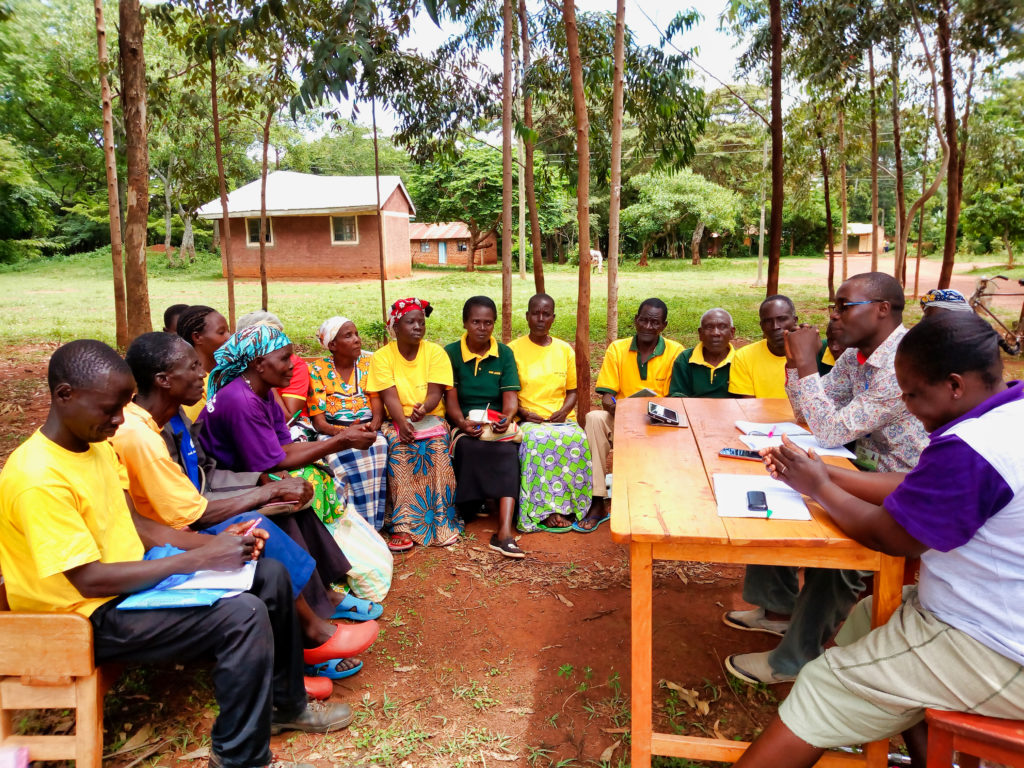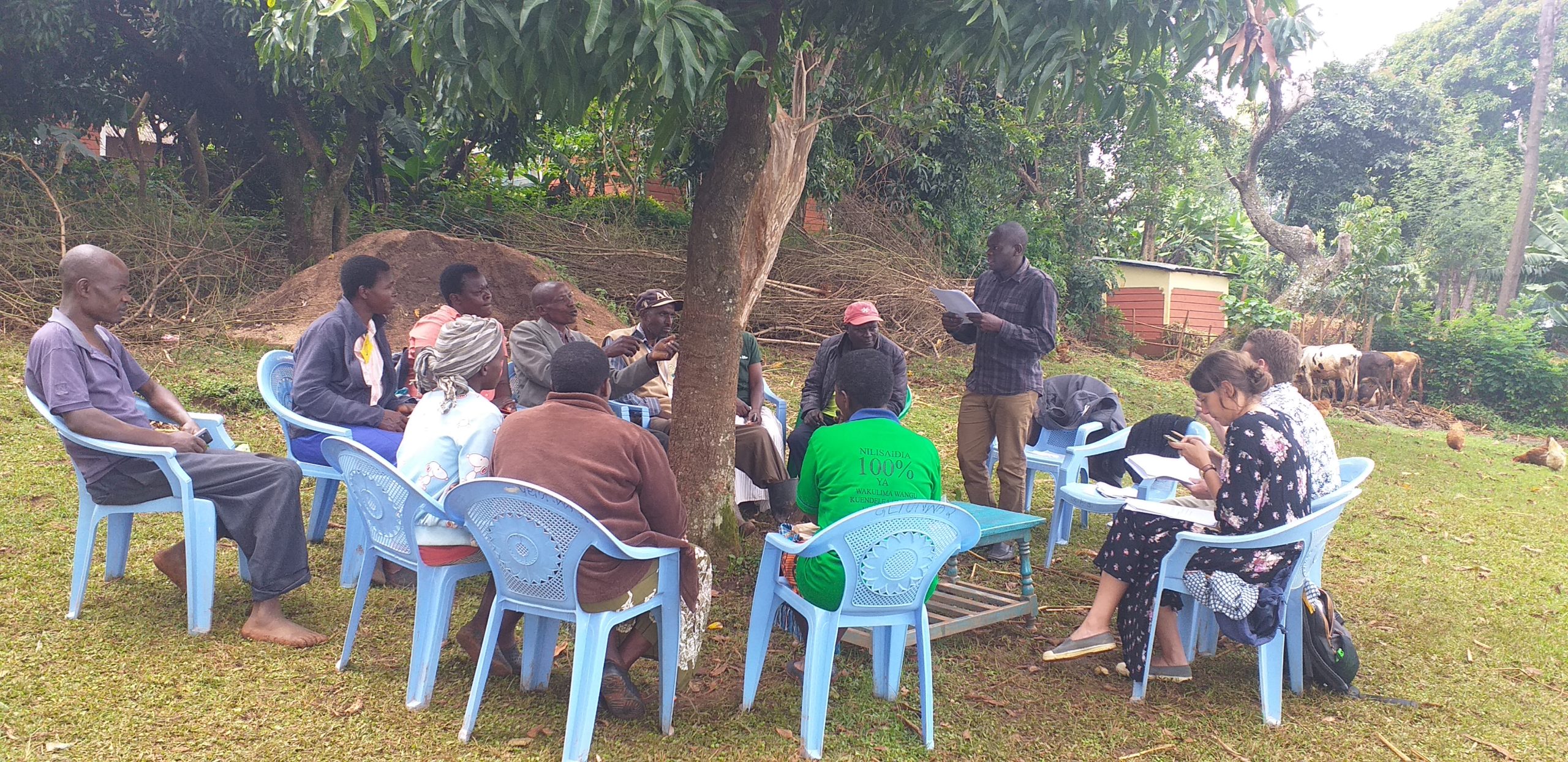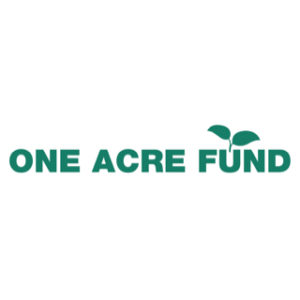One Acre Fund Research Collaboration – Kenya
Since 2016, PxD has collaborated with One Acre Fund in Kenya to advance research to improve the adoption and use of inputs to improve yields and to promote other OAF services in Kenya. To date, our respective teams have collaborated on sixteen regional trials: thirteen in Kenya and three in Rwanda.

A Longstanding Partnership
Lime is a remarkably efficient input for improving the quality of agricultural soils and can positively impact farm yields. Promising research, focusing on the use of digital tools to communicate lime input recommendations to farmers, informed the decision to form Precision Agriculture for Development (PxD’s antecedent name) in December 2015. PAD and One Acre Fund began working together in 2016 on agricultural lime adoption in Kenya. In the years since we have collaborated on projects and trials in Kenya and Rwanda, and the focus of the work has expanded from promoting the use of one input (lime) to cover input adoption more broadly, as well as the promotion and testing of OAF operational efficiencies, such as prepayment, repayment, and enrollment, working with duka stores (agro-dealers), the development of tomato cropping advisory and promoting optimal planting dates via SMS.
Leveraging SMS for Development
Our research collaboration with OAF demonstrates that SMS-based advisory services are a cost-effective tool for promoting high-impact inputs and behavior change.
Across seven Randomized Controlled Trials (RCTs), implemented with a pure control group and for which OAF administrative data is available, we find consistent evidence that SMS messages positively impact the adoption of recommended behaviors. We observed average effects of 1.3 percentage points for both input adoption and payment interventions across these trials. This is equivalent to a relative increase of 2% and 10% for payment-related and input adoption respectively, although findings vary for the latter depending on the initial adoption rate of the input in question. While the magnitude of these changes is relatively modest, SMS are so cheap to send that these interventions can be highly cost-effective (as long as staff costs associated with message development remain limited).
In general, we find that effects are larger in Kenya than in Rwanda. This is plausibly accounted for by more sophisticated digital literacy, better access to mobile phones, and relatively higher baseline adoption of recommended inputs (fertilizer and lime) in Kenya relative to Rwanda.
Moreover, we observe relatively larger impacts for newer inputs such as lime and zinc-fortified beans. These products are less well-known and are more difficult to access through local agro-dealers outside of OAF networks. Timely SMS messages are likely to be particularly effective in cases where a lack of information about a product’s benefits is a constraint on adoption. OAF is an established and trusted source of information within farming communities and is uniquely positioned to address information and trust deficits as well as supply-side constraints that could otherwise impair the takeup of new products.
Iterating Design and Service Impact
An important focus of inquiry throughout our collaboration with OAF has been to experiment with ideas to optimize SMS messages and campaigns. Across the seven trials for which there is OAF administrative data and a pure control group, we find significant differences in the impact of different types of messages. While the magnitude of these differences is relatively small (approximately 17% of the average treatment effect), these differences are large enough to warrant careful deliberate consideration of message content when designing trials. Below we present some lessons we have learned about designing SMS advisory campaigns through our collaboration with OAF.
-
What works:
Social comparison messages, that emphasize information about the adoption behavior of peer farmers for a recommended input or behavior perform better than basic advisory messages. This observation is supported by available behavioral economics literature. The messages below contrast messages with a social comparison framing with a basic framing which were sent to farmers in Kenya.
“[Name], OAF recommends you register to buy Lime for your maize. Farmers all over Western are getting bigger yields by using lime. Keep up with them!” – Social Comparison
“[Name], OAF recommends you register to buy Lime for your maize.” – Basic Message
Several other message types suggest promising effects but will require further testing for rigorous conclusions. For example, we suspect that messages emphasizing yield gains may also be very effective in shifting farmer behaviors.
-
What doesn’t work:
Messages that encourage farmers to seek information from their OAF Field Officer, Group Leader or fellow farmer are not as effective as content that gives a direct recommendation to the farmer. Moreover, content referencing a farmer’s family (e.g. “OAF recommends that your family buy lime”) are less effective than messages directed at the recipient herself (e.g. “OAF recommends that you buy lime”).
While our collaboration with OAF has primarily focused on positively affecting input adoption and loan payment behaviors through low-cost nudges, we have expanded our collaboration to include a series of SMS-based digital advisory services to promote Fall Armyworm (FAW) management and cropping advisory for tomatoes. Early analysis suggests these services have significant potential, but sample sizes are currently too small to draw many statistically significant conclusions.
The results of a trial conducted during the 2021 long rains season in Kenya suggest some potential for using SMS messages to inform farmers about optimal planting times. SMS messages increased the likelihood that farmers would plant within the optimal time for the late planters, and generally clustered planting dates closer to the optimal time.
During the same long rains season, we also collaborated in a trial involving OAF duka shops and their customers in Kenya. Customers were not necessarily OAF core program members. In the trial, we found that SMS messages are useful in encouraging farmers to visit duka shops and purchase individual recommended inputs (maize hybrid seeds, DAP fertilizer, CAN). However, SMS messages offering discounts on inputs bundled together in recommended quantities did not drive improved sales for the bundles, which were generally unpopular among walk-in customers of the OAF duka shops.
In collaboration with OAF, we are also currently running a trial in Rwanda, to better understand the motivations of village-level extension volunteers known as farmer promoters, and to test the impact of non-financial incentives customized by an individual agent’s motivation and personality traits on performance and farmer outcomes. Details of this initiative are accessible here.

PxD staff meet with a focus group of farmers to discuss tomato advisory content in Nyamira County, Kenya
